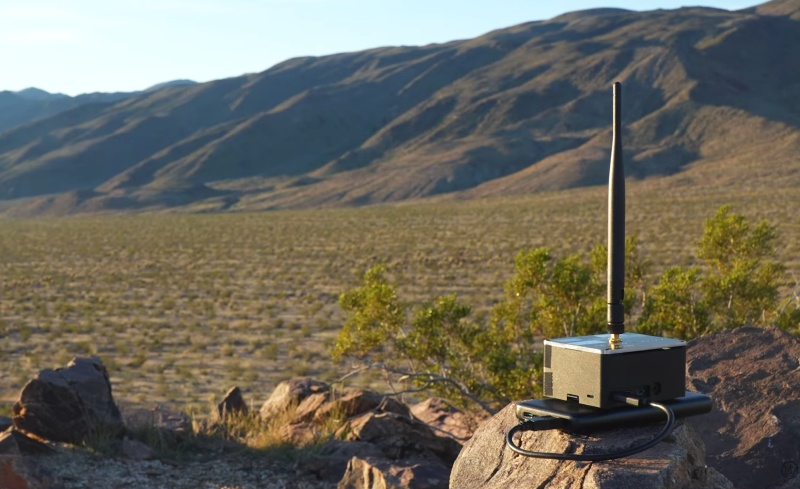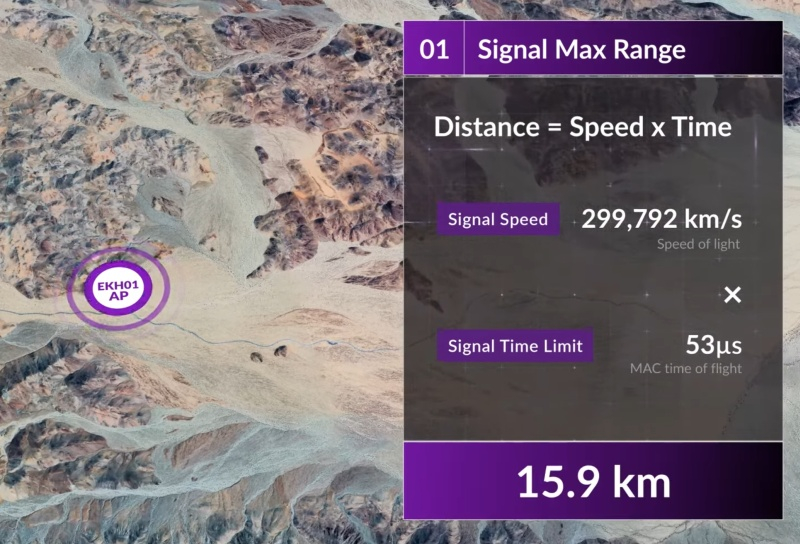The Wi-Fi HaLow data transmission range record was broken – 15.9 km, which is five times more than the previous one


In January 2024, wireless technology company Morse Micro successfully tested Wi-Fi HaLow (802.11ah) data transmission over a distance of three kilometers in a high-interference San Francisco beach area. Recently, Morse Micro broke its record five times, establishing a stable connection in the rural Joshua Tree National Park at a range of 9.9 miles (15.9 kilometers).


Image source: Morse Micro
Connection speeds in a previous test on San Francisco beach ranged from 11 Mbps at a distance of 500 meters to just one megabit per second at the then maximum distance of 3 km. In the current test, HaLow’s throughput peaked at 2 Mbps over a distance of 15.9 km, thanks to minimal interference in rural areas.


According to Morse Micro, this result matches the theoretical maximum range of HaLow and makes the standard preferable for applications in open spaces, such as agriculture, without the need for cellular communications. In urban environments, this technology is of little use due to the abundance of cellular signals and interference from numerous access points.
This is an impressive achievement by Morse Micro. The new world record with Wi-Fi HaLow 802.11ah is unlikely to be broken anytime soon. Perhaps one day HaLow networks with maximum range will become even faster and become more widespread, for example in public access points.
Recent Posts
TikTok to Shut Down Its Instagram Clone on May 8
Chinese short-video service TikTok is set to shut down its TikTok Notes section on May…
Meta Loses Head of Fundamental AI Research
Meta✴'s VP of AI research Joelle Pineau has announced her departure from the company. Her…
Meta to Release Smart Glasses with Display and Price Tag Over $1000 by End of Year
Meta✴ is preparing a more expensive version of smart glasses as part of a joint…
China Allows EHang Electric Jets to Transport People by Air, but Air Taxi Services Still Banned
On March 28, 2025, Guangdong EHang General Aviation and its two partner air transport operators…
- Mobile phones, smartphones, cellular communications, communicators, PDAs
- Technology and IT market. news
Poco F7 Ultra and Poco F7 Pro are smartphones with powerful chips, advanced camera systems and high reliability
Xiaomi recently launched the Poco F7 Ultra and Poco F7 Pro smartphones, which feature high-performance…
A World in a Box of Locusts and Single-Player Co-op: Details on Disco Elysium’s Cancelled Kuno and Kunu Spin-Off
An internal presentation of Project X7, a cancelled ZA/UM spin-off of Disco Elysium led by…